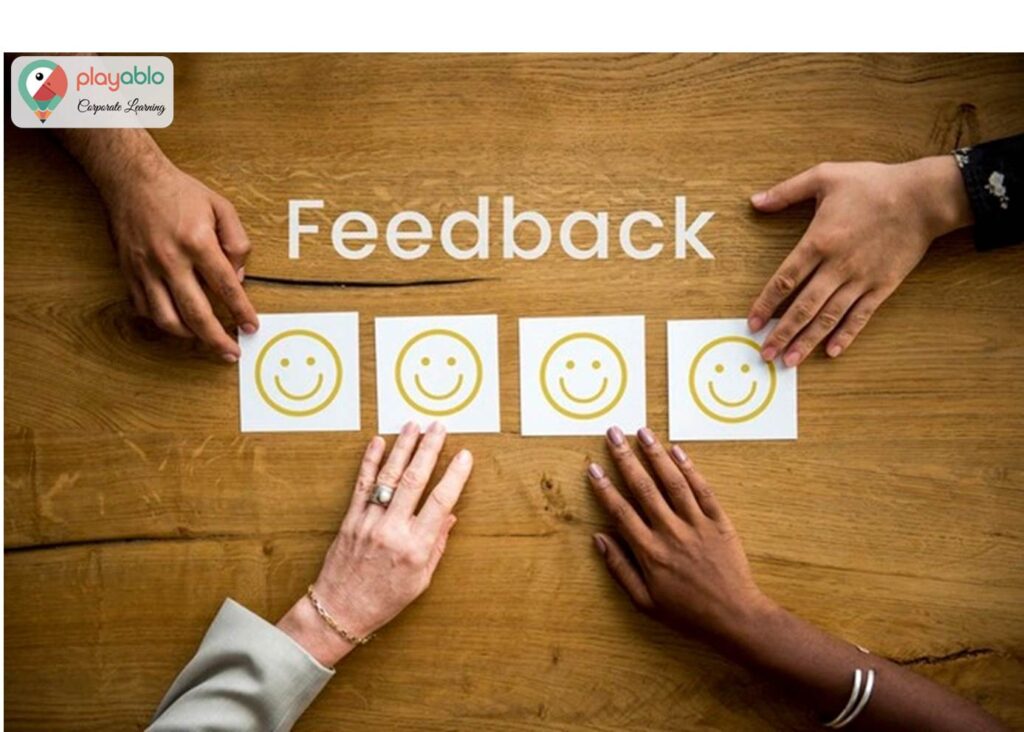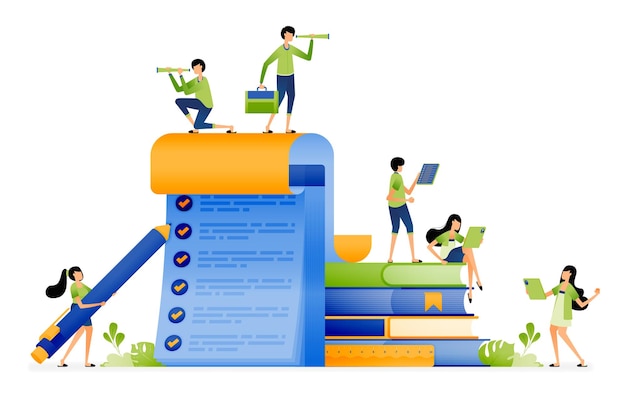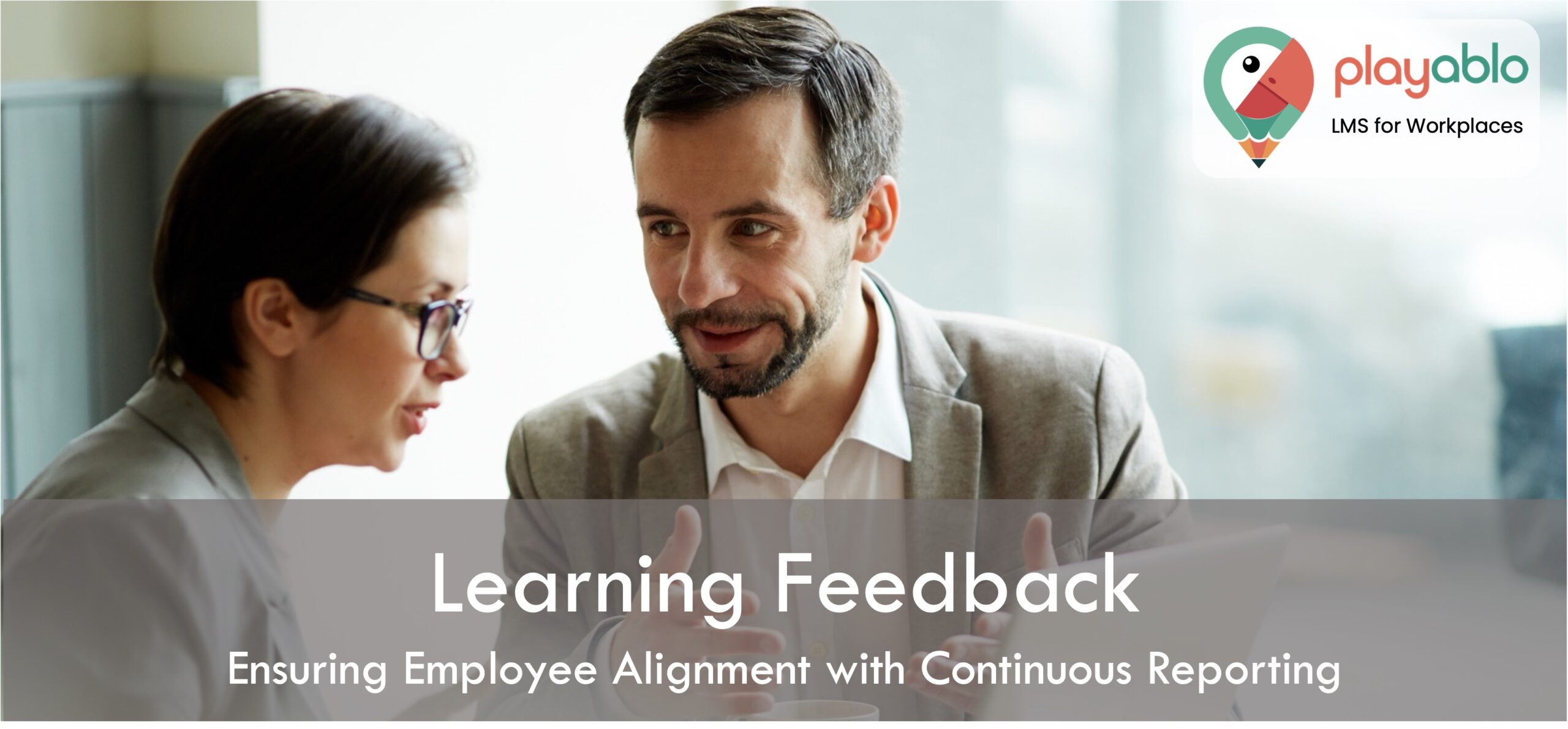Many firms have moved away from annual performance evaluations to continual learning feedback over the previous decade. This change is logical. Annual evaluations take time, focus on goals that are sometimes obsolete or irrelevant, and produce results that may or may not be related to employee contributions to the bottom line.
Employee attitude tracking mechanisms are similar. We have traditionally used annual performance assessments to measure employee engagement and emotion. On the other hand, organizations today can only keep top personnel if they measure satisfaction via training feedback much more regularly.

Thanks to emerging communication technology, organizations and employees may now exchange real-time learning feedback in communication — relevant to engagement and the tasks and issues at hand. Delivering learning feedback in communication is naturally less biased because it can be given and received by anybody, and its immediate nature allows for more adaptable problem-solving. Collaboration, coaching, decision-making, agility, skill learning, employee engagement, and retention are all enhanced by continuous training feedback solutions.
Table of Contents
Benefits of a Continuous Feedback Model
Before we deep dive into building a Continuous Learning Feedback Model, let us look at why that is helpful and the benefits you can expect to reap when you deploy such a model in your organization. With such a model, you can expect the following:
- Output from the workforce that is more productive and innovative
- A stress-free workplace
- Improved employee satisfaction
- A boost in customer satisfaction
- On-time assessment
- Increased employee engagement at work
Adopting this power model can have a massive impact on your company’s profitability in the long run. Continuous learning feedback in communication has this kind of power. Managers can use this method to recommend training programs and establish development plans to assist employees in improving their skills.
But what are the drawbacks? And how to address them? Let’s start with that.
An abundance of Data Can Overwhelm at Times
While continuous learning feedback in communication data can be highly beneficial, the sheer volume of it can often overwhelm businesses.
Everlaw, a legal software company, employs an internal digital platform to provide ongoing training feedback to peers and management. They own a tool that sends out questionnaires about employee effectiveness, engagement, and experience, as well as 360-degree feedback and team and management influence.
PwC’s people and organization practice joint global leader Bhushan Sethi has suggested using mobile apps to capture real-time data from disparate sources and deliver a dynamic visualization of training feedback received over time. Organizations can also provide feedback via these devices like smartphones, computers, and tablets.
PwC created its PwC Professional framework to provide both evaluative and developmental training feedback. Their framework allows employees to provide and request immediate appraisals on five performance dimensions: relationships, leadership, global, business, and technical aptitude.
Sethi remarked: “The system plays a significant role in changing the development conversations and introducing common language and progression criteria across the global PwC network of over 220,000 colleagues across all levels and job roles.”
An employee’s measure of success at General Electric (GE) comprises a range of learning feedback in communication channels, including in-person, via e-mail, and through the company’s performance development app. Employees can opt to share insights from colleagues with their superiors, although feedback is only accessible to those offering and receiving it via the tool.
Managers and staff collaborate on a performance summary using learning feedback in communication nuggets, which include two types of input that support the company’s continuing approach to performance development.
GE’s app provides full transparency in terms of training feedback. As per Jennifer Beihl, culture and HR learning leader at GE: “A key part of our approach is that continuous feedback is authored. Removing anonymity builds a culture of candor, which has had a significant positive impact.”
Inferences After the Deployment of Continuous Learning Feedback Model

Many businesses have discovered that various departments require different types of input. At times, continuous learning feedback systems are challenging because firms don’t always know if the process is working right away. Leaders have to be willing to refine as the organization grows.
On the other hand, employees have preferences on how they wish to share training feedback and remarks. Employees are more comfortable expressing their ideas in writing because of the survey style, which allows them to remain anonymous. However, some staff prefers face-to-face contact, so organizations should have both options available.
Additionally, data security and privacy must be prioritized in continuous training feedback models, especially those using apps, and performance data must be checked for fairness and unconscious bias. Leaders should avoid creating learning feedback in communication fatigue or a “check the box” mentality that prioritizes quantity over quality when it comes to performance feedback, in particular.
Firms must also avoid potential problems such as feedback inconsistency across leaders, poor or missing documentation, and a lack of action-oriented training feedback that leads to crucial development outcomes.
Continuous learning feedback in communication apps can be beneficial for determining what employees are thinking right now and analyzing trends, particularly in the aftermath of an event. In addition, many businesses have abandoned annual reviews in favor of app-based, just-in-time training feedback. Apps are supposed to make interactions more effortless, but even quick and regular input lacking in detail isn’t going to be very beneficial.
Ideal Ways to Track Employee Engagement
Most companies now use survey technologies to assess employee engagement and opinion as part of training feedback. Multiple firms have sought to address this problem because it is difficult for a few HR staff to track employees’ moods all of the time.
A unique concept would be to use an app that displays a continual trend of happiness by using a smiley or unhappy face. Employee response rates are guaranteed to be more significant because the responses are quick, easy, and anonymous. Employees are free to express themselves without fear of being identified and singled out. The ability to see swings allows you to keep track of a drop in employee happiness, uncover linkages, and make informed decisions.
Can such basic tools, however, genuinely help employees feel heard? Such approaches can help to foster a culture of openness and mutual communication, but there’s only so much you can learn from such learning feedback in communication. There’s a chance you’ll go overboard and make an expensive data misunderstanding.
How to Get Started with Continuous Learning Feedback?

Continuous learning feedback in communication is becoming the new normal in performance management and employee-sentiment evaluation, whether we’re ready for it or not. And there are a few recommended practices to keep in mind, the majority of which technology may assist.
Create an Organizational Culture that is Adaptive to Change
Strategy eats culture for breakfast. If you don’t have the appropriate system, your efforts will be in vain no matter how hard you strive or how robust your plans are.
Employees should be receptive to continuous training feedback, which an open and transparent culture can only facilitate. Open-mindedness, integrity, trust, honesty, and adaptability should be among the organization’s fundamental values to put continuous learning feedback in communication into practice and make it a tremendous success.
Having those fundamental principles isn’t enough; you must also assess employee adherence to the culture with a culture score survey.
Take Inputs from Employees
You can’t start with constant learning feedback in communication immediately because that would merely lead to a useless exchange of conversations that won’t help you get any insight. As a result, before introducing continuous training feedback, start taking your team members’ inputs while defining goals and guiding them in setting the correct objectives that correspond with the broader business goal.
Employees will better understand what you expect of them and have greater faith in you since you are prepared to lead them in the right way. Furthermore, you and your teammates would have better understood one another.
A goal-setting framework encourages collaboration and good communication among team members to meet the team’s quarterly goal. Accountability and autonomy further enhance employee involvement and commitment in the goal-setting process, laying the groundwork for introducing ongoing learning feedback in communication.
Introduce One-on-one Meetings
You now better understand your employees’ objectives and how they are progressing toward them. As a result, you can begin holding regular one-on-one sessions with them and guiding them along the road, even if they appear to be on the wrong track. This approach will improve the overall work experience and make implementing continuous learning feedback in communication culture much more manageable.
Apart from discussing goals, managers can use these training feedback sessions to interact with employees and learn about their strengths and flaws. They can also organize sessions that are focused on personal and professional development rather than goals. This improved manager-employee relationship can help the company weather any storm.
Encourage Communication and Strong Leadership
To get employees to speak, a manager must communicate successfully with them. This methodology displays a high level of leadership ability. Even if your implement a continuous training feedback system but the manager lacks strong communication and leadership abilities, it will be no different from how employees treat the annual performance review process.
Continuous learning feedback in communication benefits should be disseminated to the entire organization, just as any new program should be cascaded from the highest to the lowest level of the workforce. A/B testing of the continuous feedback assessment system should be done from a small team to a business unit to the entire organization.
Create a Dashboard
First, create single learning feedback in communication dashboards that enable quick input, searching, evaluating, and sorting of all requested and provided comments—keeping in mind that the data will be more qualitative and require more complex analysis.
Ad: PlayAblo’s Enterprise-Grade Micro-Learning platform is built for millennial learners. Micro-Learning, along with assessments and gamification features, ensures learning outcome measurement along with sustained engagement.
Find out more and request a custom demo!
Immediately Categorize Responses

Any training feedback in communication given should ideally be instantly classified (e.g., achievement of a performance target, peer recognition, employee reaction to a CEO announcement, etc.) and related to individual and organizational objectives.
Fast responses should be praised and rewarded, and all managers and staff should be encouraged to use the training feedback system frequently. Last but not least, make it fundamental. Provide simple instructions and allow your employees to use any device to access the system.
Organize Data from Multiple Channels
If you’re gathering training feedback in communication via in-person discussions, e-mail, or an app, you’ll need to figure out how to funnel it so that nothing gets lost in the shuffle. For example, inputting spoken and e-mailed comments into a single feedback system is the most efficient way to go, but forcing your managers and employees to do so may require a cultural shift.
Be patient, provide reminders, and consider implementing training feedback in communication systems that ask managers and staff for specific verbal and e-mailed comments. Fortunately, artificial intelligence in feedback dashboards will automatically extract insights from channels within the next few years.
Adopt Technology
Technology is a must-have addition to giving training feedback in communication. The procedure can be carried out manually, but tracking records, assessing user moods, motivating users to provide constructive comments, and engaging employees can only be accomplished with the help of effective performance management and engagement software such as Synergita.
Technology can keep employees and management connected in a remote working scenario through a constant training feedback process, regardless of where they work.
Furthermore, no one will feel isolated, as they did during the initial days of lockdown, because everyone will be connected if an innovative performance management software is in place. Some of the features included will be 360-degree training feedback in communication, rewards and recognition, goal-setting, one-on-one meeting summaries, training programs and development plans, and so on.
Ad: PlayAblo’s Enterprise-Grade Micro-Learning platform is built for millennial learners. Micro-Learning, along with assessments and gamification features, ensures learning outcome measurement along with sustained engagement.
Find out more and request a custom demo!
Furthermore, the software will provide precise insights and tailored training feedback reports to assist businesses in making educated decisions.
Conclusion
However, technology adoption and ensuring that new systems work as intended aren’t the only factors to consider. The exchange of training feedback must remain a purely human endeavor. It necessitates characteristics that robots lack, such as diplomacy, empathy, camaraderie, and collaborative problem-solving.
Moving from engaging with employees once or twice a year to training feedback in communication daily constitutes a fundamental shift in engagement expectations for most firms. It will very certainly necessitate extensive and targeted communication with your entire workforce and a time of growing pains while new processes are tested and expanded.
Fortunately, strategically streamlined approaches can help you move smoothly while also encouraging employee growth, productivity, contentment, and retention.







Comments are closed, but trackbacks and pingbacks are open.